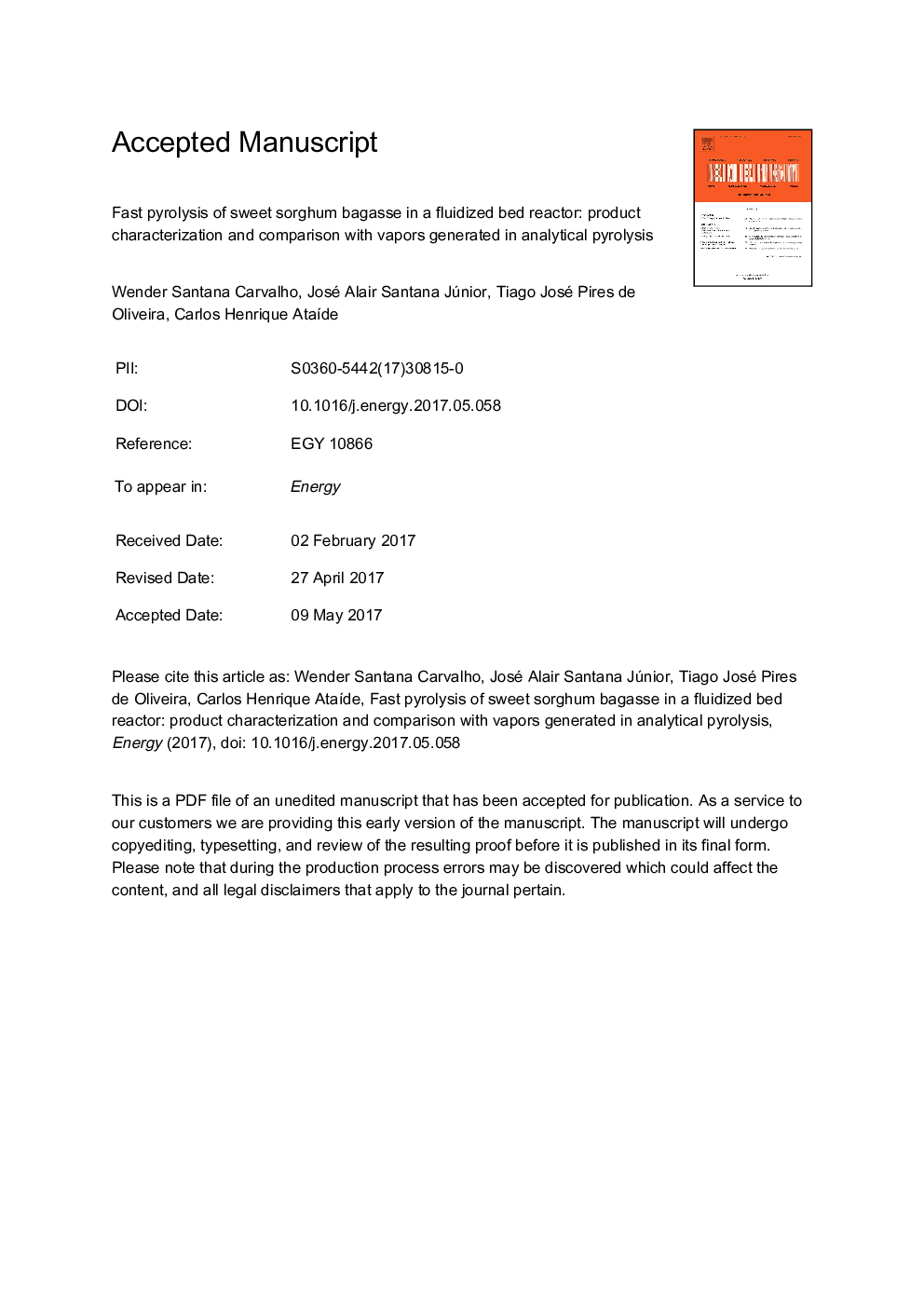| Article ID | Journal | Published Year | Pages | File Type |
|---|---|---|---|---|
| 5476769 | Energy | 2017 | 40 Pages |
Abstract
Lignocellulosic biomass can be used as an alternative for the production of fuels and chemical feedstocks using thermochemical conversion processes, such as pyrolysis. This study aims to perform the fast pyrolysis of sweet sorghum bagasse in a fluidized bed unit, comparing the results obtained with the products from analytical pyrolysis. Furthermore, the apparent activation energy of thermal decomposition of biomass was determined using two global reaction models. The estimated values of apparent activation energy ranged from 106.2 to 203.3Â kJ/mol. The main compounds identified in the vapors generated in the analytical pyrolysis were acetic acid, isoprene, methyl pyruvate, furfural, 2,3-dihydrobenzofuran, 4-hydroxy-3-methylacetophenone and 5-hydroxymethylfurfural. In the bio-oil produced in the fluidized bed unit, the main compounds identified were benzene, acetic acid, isoprene, 3-methoxypropanal, toluene, furfural, 1,1-dimethoxycyclohexane and phenol. The difference between the identified compounds could be attributed to the solvent used, the efficiency of the condensation system, the occurrence of secondary reactions during the fast pyrolysis process in the fluidized bed reactor and the polymerization after the condensation of the vapors produced.
Related Topics
Physical Sciences and Engineering
Energy
Energy (General)
Authors
Wender Santana Carvalho, José Alair Santana Júnior, Tiago José Pires de Oliveira, Carlos Henrique AtaÃde,
